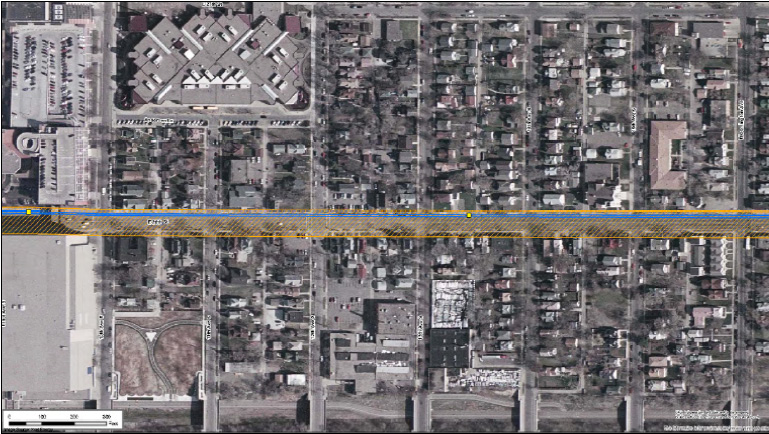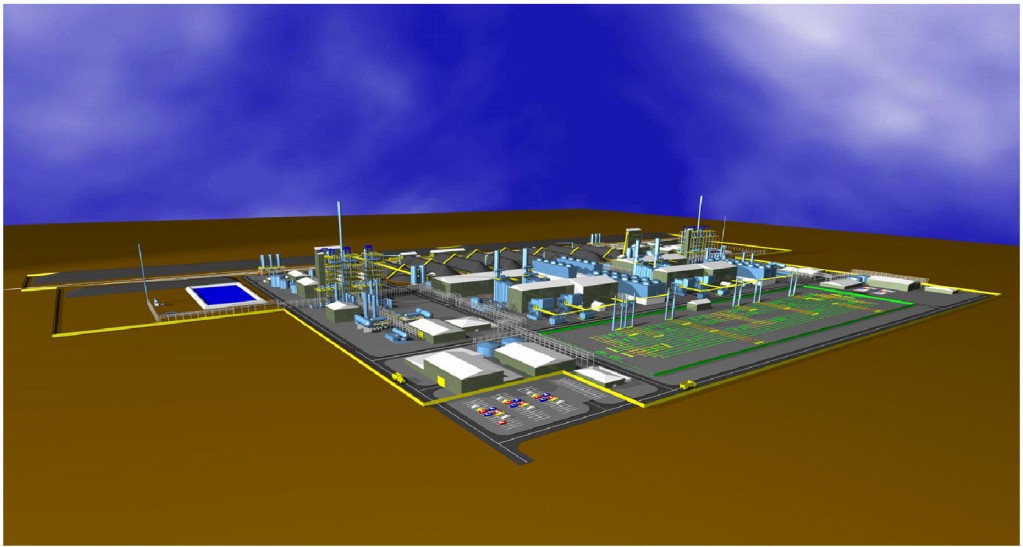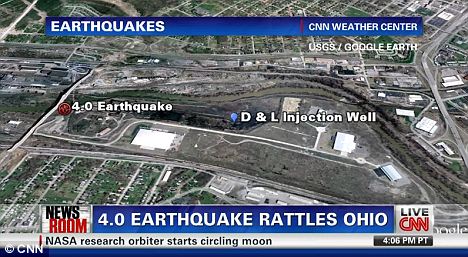Undergrounding Hiawatha!
January 13th, 2012
There’s good news and bad news. The good news is that the PUC did order that the Hiawatha Project transmission line be undergrounded.
YEAAAAAAAAAAAAAA!
The bad news is that NO ONE is addressing need, need has been presumed, despite lots of evidence in the record that the project is way way more than what is required for the claimed 55MW need, which in itself is questionable. Silence… Those who worked so hard to get a requirement for a Certificate of Need abdicated, zero follow through, after legislation passed to require a Certificate of Need, and it then wound its way through the PUC process, and there were NO intervenors.
Here’s the PUC’s deliberation:
It seems to end before they’re done, and there’s a note that complete audio will be posted later, so check back. Right now there’s about 45 minutes and it ends as they’re going through exceptions to the ALJ report, a prelude to the ultimate vote.
Here’s the report in theSTrib:
Xcel told to bury new power lines across south Minneapolis
Article by: STEVE BRANDT , Star Tribune
Updated: January 12, 2012 – 11:15 PM++++++++
A state board Thursday ordered that new high-voltage power lines across the heart of south Minneapolis be buried underground but deferred the question of who should pay the extra $13.6 million cost.
The Minnesota Public Utilities Commission ordered that the twin 115-kilovolt lines requested by Xcel Energy be deemed necessary but said they should be buried under E. 28th Street.
That’s a victory for the city and a number of neighborhood representatives. They argued that an alternative route that would run lines overhead or underground along the bike-pedestrian corridor was too disruptive. “It’s a huge victory, said Soren Jensen, staff chief for the Midtown Greenway Coalition.
But the precedent-setting question of who pays will require a separate proceeding that will last several months and determine whether all Xcel customers in Minnesota will help bear the cost of burying the lines or just those in Minneapolis.
The city argued that all Xcel customers should pay because the factors arguing for burying the route are so compelling that any other route, including the greenway, would be unreasonable. Burial of the lines, the city said, should thus be considered a standard cost, borne by all customers, rather than a special accommodation whose extra costs should accrue only to Minneapolis residents. Xcel agreed with that wider-cost impact.
But the PUC wasn’t ready to make that precedent-setting decision now, telling Xcel to file its views in 30 days in a proceeding that will give other potentially affected parties a chance to comment.
“There is no precedent case just like this,” said attorney James Strommen, who argued on behalf of suburban cities in support of the city position. “The standard is not always overhead in all cases, in our view.”
At the PUC’s request, Xcel generated estimates of the amounts needed to pay off the extra cost of the buried lines. To do so in the standard five years, the per customer cost would be $12 if spread statewide, and $83.40 if levied only within Minneapolis.
Xcel estimates that the lines and two new substations at either end, at Hiawatha and Oakland Avenues, will cost $42 million. The utility will refine those costs as it does final engineering for the project; it plans to break ground later this year and start operations in 2014.
Xcel argued that since 2006, electrical demand has exceeded its capacity to reliably provide service to customers in the south Minneapolis area. Opponents argued that Xcel has further plans to bisect south Minneapolis with transmission lines, has overestimated demand and should substitute conservation measures.
The utility originally proposed that the lines be built within the Midtown corridor paralleling Lake Street somewhere between E. 31st Street and E. 26th Street. It said that a greenway route would be cheapest but that option quickly drew opposition from the recreation lobby.
Making some bread
January 10th, 2012
Not bad for an amateur!
Tried some ciabatta, let the sponge go a little too long but it came out great — must be beginner’s luck. At this ripe age, I decided that it’s time to learn to bake bread, never have before, and I don’t know why. Must be nesting, trying to get the kitchen in the “new” house together. Or maybe it’s just time to make some dough…
Excelsior Energy Air Permit Incomplete
January 5th, 2012
It appears Tom Micheletti, Excelsior Energy, is having another bad day. The Air Permit for the Mesaba Energy Project was rejected by the MPCA as incomplete, modeling not approved, the list goes on and on… Yes, that’s “our” Mesaba, the coal gasification power plant that can’t get a Power Purchase Agreement if its life depended on it, and yes, its life does depend on it.
MPCA Letter – Mesaba App Incomplete – Dec 30 2011
Thank you, Air Quality at the MPCA, for making my day!
Ohio Earthquakes & Fracking
January 1st, 2012
Earthquake in Youngstown, Ohio, the epicenter just a hop, skip and a jump from the D&L Injection Well, pictured above.
Elisa Young in Youngstown sent me this link this morning, noting that “on this Diane Rehm segment the industry specifically states on the air that earthquakes of 2.0 or less (like they can control an earthquake in progress) are beneficial to the drilling company because it shows them the fracking is working. …but fracking and injection don’t induce seismic activity in Ohio… ” The section on earthquakes starts at 28:12.
If you don’t have a copy yet, if you haven’t read it, get with it, learn about gas migration and earthquakes, errrrr… seismic events (copies are getting harder to find, price is going up, but I’m glad because it means that people are paying attention and reading this MUST READ book):
Earthquakes have becoming more and more common in Ohio, as in Arkansas, Pennsylvania, Oklahoma, and yes, there is a trend, a connection, and it’s GAS. In this Youngstown, OH case, it’s related to injecting fracking waste into the ground near a fault. How on earth did they get a permit to do this, anyone with half a brain would know that if you’re pumping in, there is bound to be a response!
Ohio’s “Are you ready for an earthquake?” page!
Here’s a sample, from the Columbus Dispatch:
State links quakes to work on wells
By Joe Vardon
The Columbus Dispatch Sunday January 1, 2012 11:34 AM“The 5-mile radius, we were told by our geologists, is an adequate buffer zone” for the fault line, Zehringer said. “There are four other wells, none of them active, but we’re not going to allow any activity to take place in these wells.”
Michael Hansen, of the Ohio Seismic Network, said that even though Northstar No. 1 was shut down Friday, there is still potential for more quakes, although the magnitude of yesterday’s quake may have relieved some of the pressure near the fault line.
There are 177 injection wells throughout the state. Zehringer and other officials, speaking on a New Year’s Eve conference call, said the single Youngstown well is the only one of its kind that’s been related to seismic activity since the state started using them in the 1970s.
Kasich officials also stressed that the months-long shaking in Youngstown is not a result of hydraulic fracking — a procedure used to extract oil and gas out of rock formations such as the Marcellus and Utica shale. Discoveries of oil and gas in the shale rock in eastern Ohio has sparked hopes for an economic boon in the state’s Appalachian region.
State Rep. Robert F. Hagan, D-Youngstown, called for a statewide moratorium on injection wells. Hagan said he asked the U.S. Environmental Protection Agency to intervene because of the possibility of another quake.
“We don’t want to overreact,” said Zehringer, who suggested that a wider moratorium in well activity “could devastate the economic livelihood of thousands of Ohioans.”
The magnitude 4.0 quake that struck yesterday afternoon in McDonald, outside Youngstown, is the largest of the 11 quakes that originated there, Hansen said.
Residents said a boom accompanied the shaking yesterday. Sheriff’s dispatchers from several counties in the area said there were no immediate reports of damage.
Rick Simmers, chief of oil and gas management for the ODNR, said a daily average of about 5,000 42-gallon barrels of brine water — a byproduct of oil and gas drilling — were pumped into the well, down to 9,200 feet. He said a majority of the water comes from Pennsylvania wells.
Gov. John Kasich, who is vacationing with his family in Florida for the holidays, was in constant contact with Zehringer and other senior staff members throughout the day yesterday, communications director Scott Milburn said. “The governor directed director Zehringer to put public health and safety first and to make a response that is reasonable and appropriate and based on science,” Milburn said.
The well’s owner, Northstar Disposal Services LLC, which agreed to stop injecting brine into the well on Friday, applied for and received licensing under the Strickland administration, Kasich spokesman Rob Nichols said. The No. 1 well has been active since December, 2010, according to Nichols.
Information from The Plain Dealer was included in this story.




